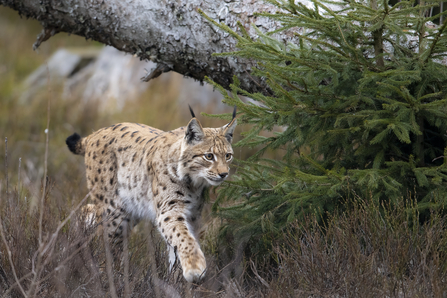At the World Conservation Congress Mongolia has 140 mammals reflecting its continental location and habitat variability but of these, a ‘Big 6’ set of animals have been chosen as the icons for nature restoration efforts but also that they are keystone species that are endangered. Each of the six play a vital role in the Gobi Desert ecosystem. For example, the wild ass or kulan uses its sharp hooves to dig into dry riverbeds creating ‘kulan wells’ sustaining other life; the Mongolian saiga antelopes, moving in large herds, move nutrients around the steppe desert systems through their grazing and droppings.
What are the Big 6 of Mongolia?
1. Goitered gazelle (Gazella subgutturosa) – at its most northernmost part of their range in Mongolia, this gazelle was critically endangered by the early 2000s down to just 12,000 animals. Conservation action has now increased that to over 90,000.
2. Przewalski horse or takhi (Equss ferus przewalskii) – the world’s last remaining wild horse, this species was extinct in Mongolia but has now been reintroduced with 700 horses now roaming wild again in the Mongolia.
3. Gobi bear (Ursus arctos gobiensis) – one of the world’s rarest mammals with just 50 individuals remaining in the wild.
4. Wild ass or kulan (Equus hemionus) – a critical keystone species of steppe ecosystems once ranging from perhaps as far west as Iberia through the steppes of Europe and Asia. Mongolia has the largest wild population of kulan at 80,000 individuals.
5. Bactrian camel (Camelus ferus) – a true desert animal capable of drinking fresh and saline water, there are now only 700 left in the wild, 80% of which are found in Mongolia and migrate between China and Mongolia.
6. Mongolian saiga (Saiga tatarica mongolica) – a relic species of the steppe that has survived through the last ice age but by 2018 and declined to just 3,000 individuals. Today, the population has recovered to 23,000 animals.
In Mongolia, this identification of the Big 6 can be used for tourism and PR (much as the ‘Big 6’ are used for African safari park PR – which was originally about big game hunting but nowadays it’s cameras that do the shooting). But it is also used to create a framework for the restoration of the Gobi Desert. Ensuring this habitat can support these species provides a single vision impetus for effective nature restoration and, as keystone species, the restoration of those species ranges then maintains and enhances those restoration efforts. Could we translate such thinking to the UK?


